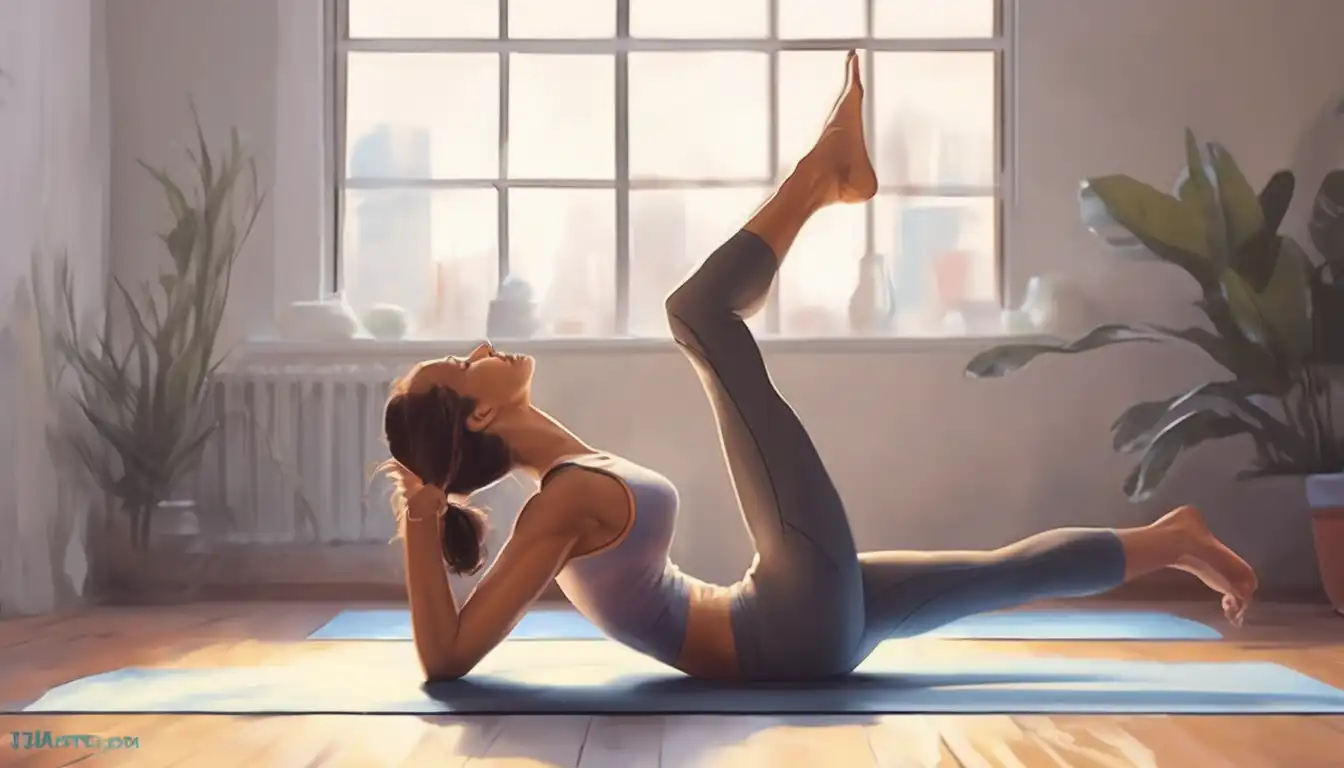Unlock Your Body's Potential: Essential Stretches for Flexibility and Relaxation
In today's fast-paced world, maintaining flexibility and finding moments of relaxation are crucial for overall well-being. Whether you're an athlete looking to enhance performance or someone seeking relief from daily stress, incorporating the right stretches into your routine can transform your physical and mental health. This comprehensive guide covers the most effective stretches designed to improve flexibility while promoting deep relaxation.
Why Flexibility and Relaxation Matter
Flexibility isn't just for gymnasts and dancers—it's a fundamental component of functional movement that affects everyone. Improved flexibility enhances joint mobility, reduces injury risk, and alleviates muscle tension. When combined with relaxation techniques, stretching becomes a powerful tool for stress reduction and mental clarity. Regular stretching practice can help combat the negative effects of sedentary lifestyles and promote better posture.
Warm-Up: Preparing Your Body
Before diving into deep stretches, always begin with a proper warm-up. Spend 5-10 minutes performing light cardio activities like jogging in place or jumping jacks to increase blood flow to your muscles. This preparation makes your stretching routine more effective and safer. Remember that cold muscles are more prone to injury, so never skip this crucial step.
Upper Body Stretches
Neck and Shoulder Release
This stretch targets the trapezius and levator scapulae muscles, which commonly hold tension from stress and poor posture. Sit or stand with proper alignment. Slowly tilt your head to the right, bringing your ear toward your shoulder. Hold for 20-30 seconds, then repeat on the left side. For deeper relaxation, combine this stretch with deep breathing exercises.
Chest Opener Stretch
Perfect for counteracting the forward hunch many develop from desk work, this stretch opens the pectoral muscles. Stand in a doorway with elbows bent at 90 degrees and forearms resting on the door frame. Step forward gently until you feel a stretch across your chest. Hold for 30 seconds while maintaining steady breathing. This stretch not only improves flexibility but also enhances breathing capacity.
Core and Back Stretches
Cat-Cow Pose
This dynamic stretch from yoga practice is excellent for spinal flexibility and relaxation. Begin on hands and knees. Inhale as you drop your belly, lifting your head and tailbone (Cow pose). Exhale as you round your spine, tucking your chin to chest (Cat pose). Flow between these positions for 10-15 repetitions, synchronizing movement with breath for maximum relaxation benefits.
Child's Pose
A restorative stretch that promotes deep relaxation while stretching the back, hips, and shoulders. Kneel on the floor, sit back on your heels, and fold forward, resting your forehead on the ground. Extend your arms forward or alongside your body. Hold for 1-2 minutes, focusing on releasing tension with each exhale. This pose is particularly effective for stress relief and can be practiced anytime you need a mental reset.
Lower Body Stretches
Hamstring Stretch
Tight hamstrings contribute to lower back pain and limited mobility. Sit on the floor with one leg extended and the other bent with foot against inner thigh. Slowly hinge forward from your hips toward your extended foot until you feel a gentle stretch. Hold for 30 seconds per side. For variations, try this stretch standing or using a resistance band for assistance.
Hip Flexor Stretch
Modern sedentary lifestyles often lead to tight hip flexors. Kneel on one knee with the other foot forward in a lunge position. Keep your back straight and gently push your hips forward until you feel a stretch in the front of your hip. Hold for 30 seconds per side. This stretch improves hip mobility and can alleviate lower back discomfort.
Butterfly Stretch
Excellent for inner thigh and hip flexibility, this stretch also promotes relaxation. Sit with soles of your feet together and knees bent outward. Hold your feet and gently press your knees toward the floor. Maintain a straight back and breathe deeply as you hold for 30-60 seconds. This stretch is particularly beneficial for those who sit for prolonged periods.
Full-Body Relaxation Stretches
Standing Forward Fold
This comprehensive stretch addresses multiple muscle groups while calming the nervous system. Stand with feet hip-width apart, exhale as you hinge at hips and fold forward. Allow your head and arms to hang heavy. Bend knees slightly if needed. Hold for 30-60 seconds, feeling the stretch through your hamstrings, back, and shoulders. This inversion also promotes blood flow to the brain, enhancing mental clarity.
Supine Twist
A gentle spinal twist that releases tension throughout the back and promotes relaxation. Lie on your back with knees bent. Drop both knees to one side while turning your head opposite. Hold for 30 seconds per side, breathing deeply into any areas of tension. This stretch is ideal before bedtime to prepare your body for restful sleep.
Creating Your Stretching Routine
Consistency is key to improving flexibility and achieving relaxation benefits. Aim to stretch at least 3-5 times per week, holding each stretch for 20-30 seconds. Always listen to your body—stretch to the point of mild tension, never pain. Combine stretching with other wellness practices like proper hydration and balanced nutrition for optimal results.
Breathing Techniques for Enhanced Relaxation
Integrate diaphragmatic breathing into your stretching routine. Inhale deeply through your nose, expanding your belly, and exhale slowly through your mouth. This breathing pattern activates the parasympathetic nervous system, enhancing the relaxation response. Time your breaths with your stretches—inhale as you prepare, exhale as you deepen into the stretch.
Safety Considerations and Progress Tracking
While stretching offers numerous benefits, proper technique is essential. Avoid bouncing movements, which can cause muscle strain. If you have existing injuries or medical conditions, consult a healthcare professional before beginning a new stretching regimen. Keep a flexibility journal to track your progress, noting improvements in range of motion and reductions in muscle tension.
Remember that flexibility improvements happen gradually. Celebrate small victories and maintain patience with your body's unique timeline. With consistent practice, these stretches will not only enhance your physical flexibility but also become a cherished ritual for mental relaxation and stress management.
